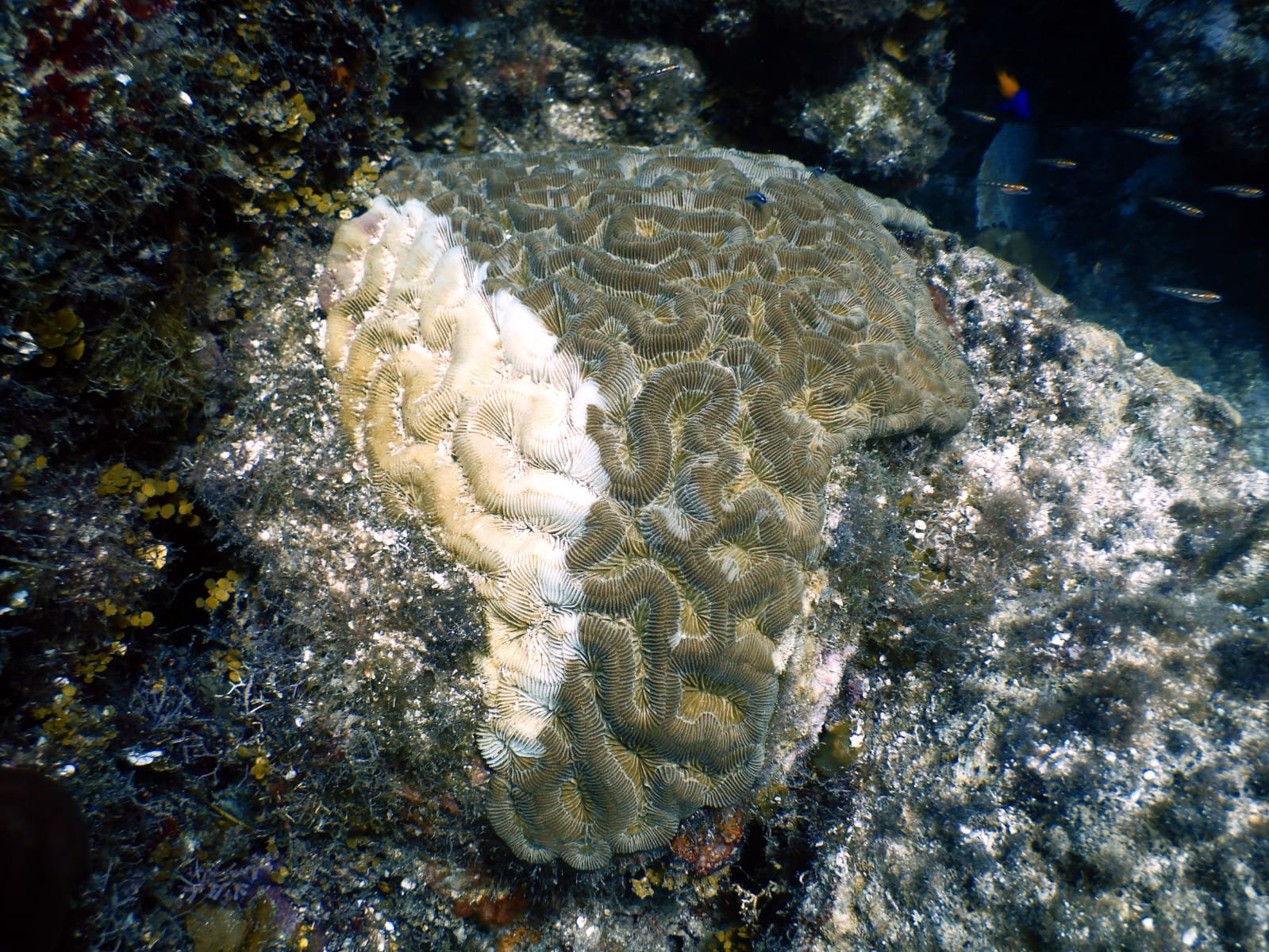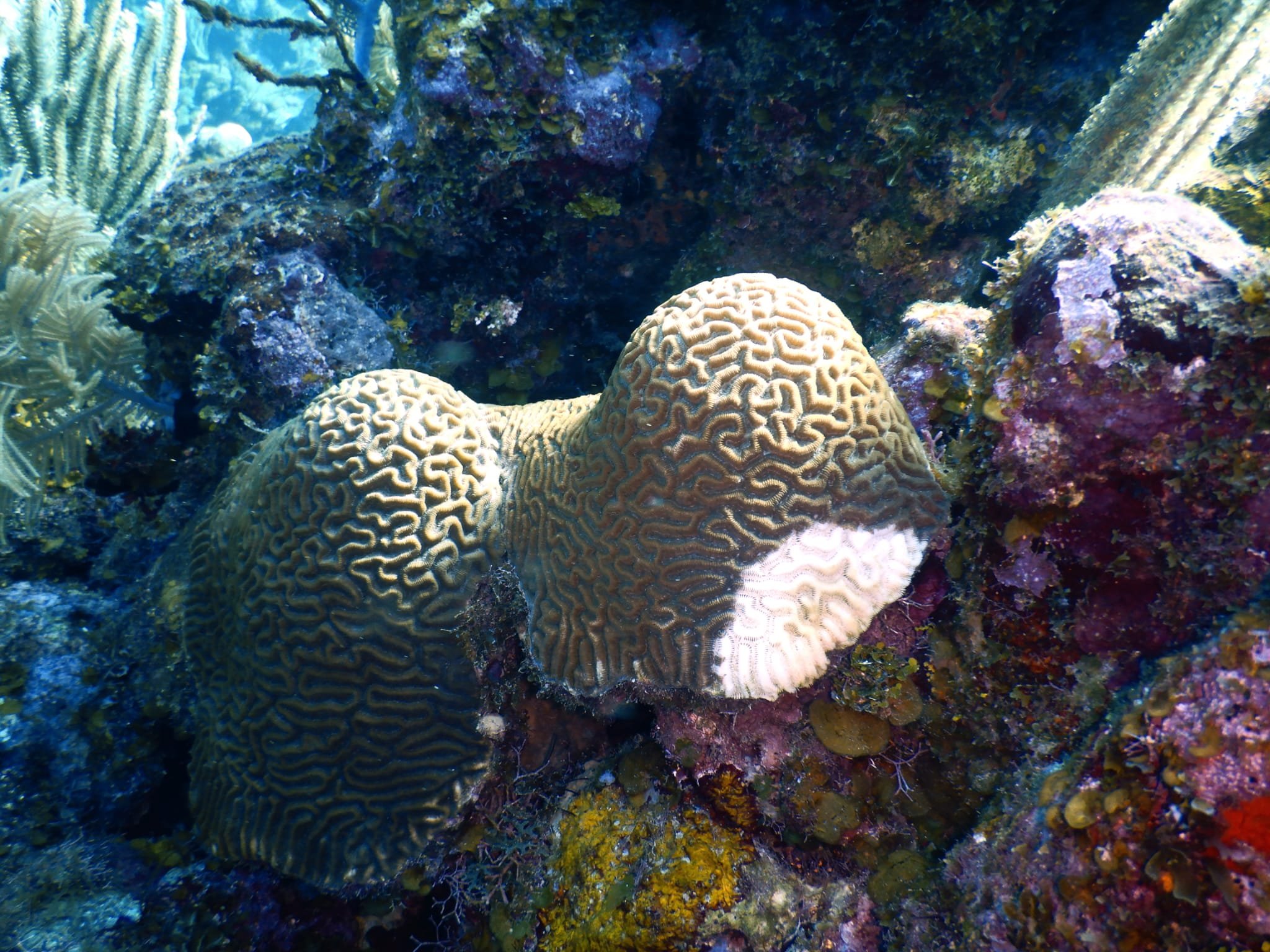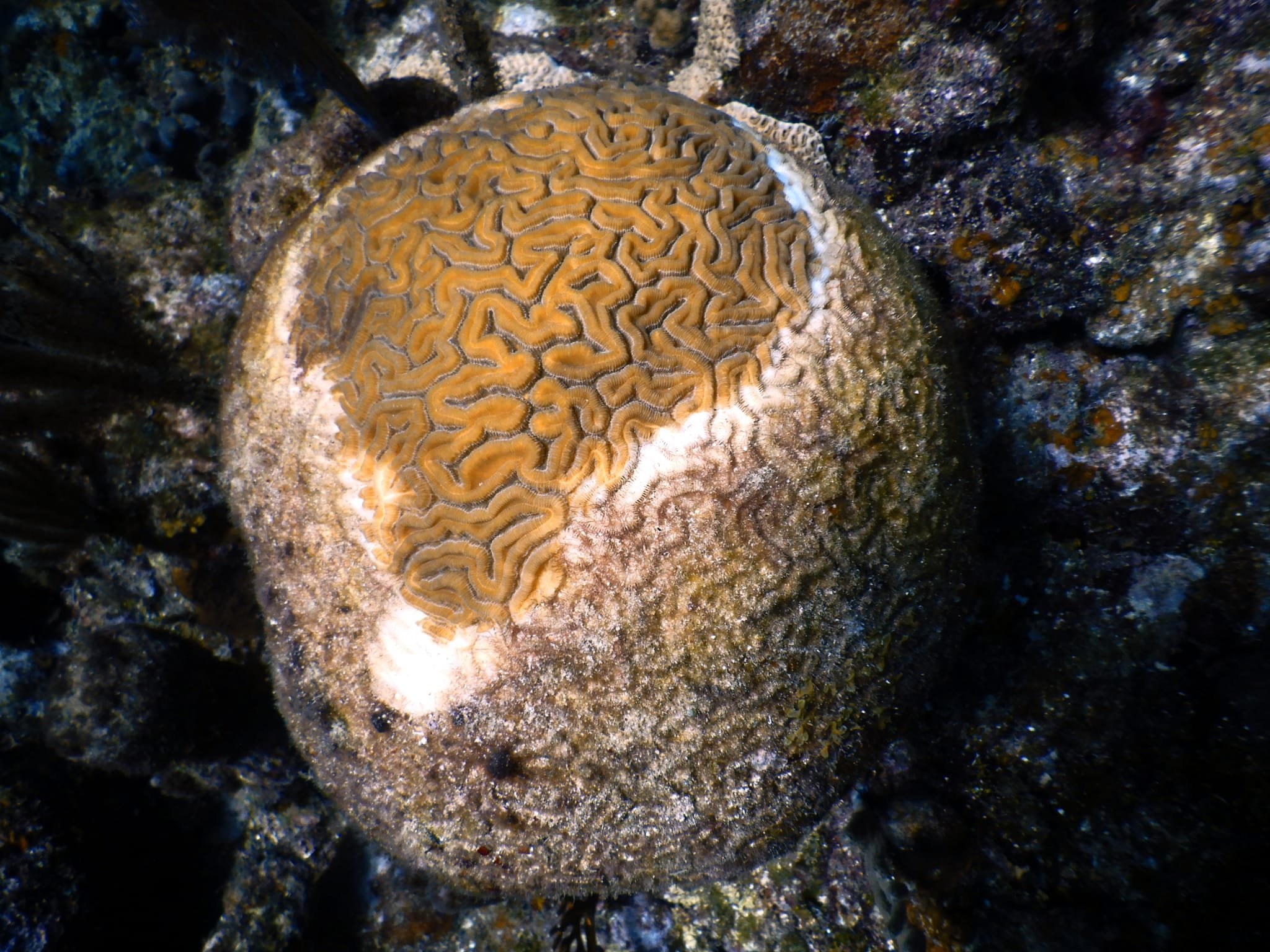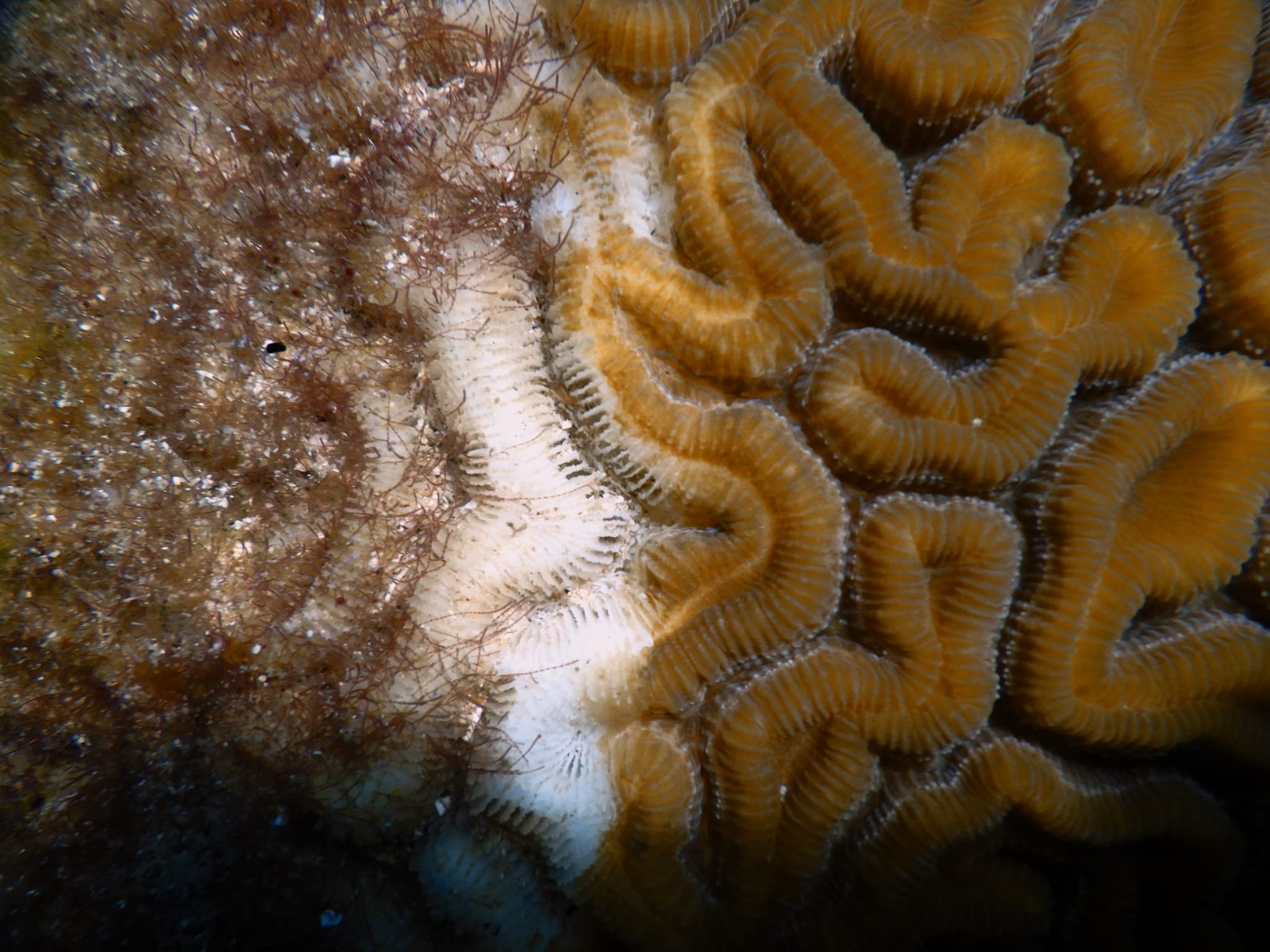Stony Coral Tissue Loss Disease
Written by Wildlife & Welfare Researcher Rose Little.
As part of our March edition of the Wildlife Calendar, we have been focussing on endangered species in Honduras. With its stunning coastline, we wanted to look deeper at the main threat to the living coral reefs all along the coast of Honduras.
Coral reefs cover 0.2% of the ocean floor, however they are home to at least 25% of all marine life. These ancient and beautiful structures make perfect habitats for millions of fish, crabs, squid, sponges, turtles, rays and so much more. Their immense diversity has given them the nickname “rainforest of the seas”. These ocean “rainforests” provide vital protection against erosion and extreme weather events.
Although corals may look like rocks or plants they are actually huge colonies of millions of tiny animals called polyps that build a strong calcium carbonate shell around them. Inside each polyp there is a symbiotic relationship with an algae called zooxanthellae, which provides the animals with food transformed from sunlight.
Corals have been on earth for more than 400 million years growing at a rate of 0.2 to 8 mm per year! Some mature coral colonies can be as big as a small car and thousands of years old. Sadly alongside the warming of the ocean and mass bleaching events, there are many diseases that are currently decimating some coral species. In this blog I am going to focus on stony coral tissue loss disease (SCTLD) which is currently spreading through the Caribbean.
SCTLD is a new lethal disease that was first identified in Florida in 2014. It is affecting >30 species of coral especially pillar, star, brain and starlet coral. The disease has spread quickly with high coral mortality. Since the first report of SCTLD outbreaks have been confirmed in Jamaica, Mexico, Sint Maarten, the US Virgin Islands, Dominican Republic, Turks & Caicos Islands, Saint-Martin, Belize, Sint Eustatius, The Bahamas, Puerto Rico, British Virgin Islands, Cayman Islands, Guadeloupe, St. Lucia, Honduras and Martinique.
The Mesoamerican barrier reef system that Honduras sits within, consists of over 60 species of corals and over 1500 species of fish. These are vital for the local economy, creating income for fisheries, tourism and pharmaceutical industries as well as protecting coastline and coastal communities against the impacts of climate change, flooding, erosion and storm damage. A study by The Nature Conservancy found that reef tourism generates over $7.9 billion annually for Caribbean economies. SCTLD is putting the Caribbean economy at great risk and without immediate action coral reefs have the potential to die out.
The characteristics of SCTLD is that sick colonies display multiple lesions leaving the white coral skeleton exposed. Corals can lose up to 4cm2 of live tissue per day. Some colonies will die within weeks to months. SCTLD is spreading rapidly, beginning in deeper dive sites and then spreading to shallower depths. SCTLD occurs over large areas, along the Mexican Caribbean coast over 30% of all corals have been affected.
Although researchers in Florida have been studying the disease for 8 years, due to the complexity of the disease they still do not know the exact pathogen which is causing the disease. However, it is thought to have a bacterial component. It is thought to be spreading through waterways and direct contact.
SCTLD is monitored throughout the Caribbean; you can track its progress through the AGRRA interactive map. You can also perform crucial citizen science work by submitting sightings of SCTLD through the AGRRA website.
Of the 17 countries where SCTLD has been reported only 11 are currently doing monitoring and intervention. SCTLD was first confirmed in Roatan, Honduras in September 2020. Since then the Roatan Marine Park has been monitoring the progression. They dive the monitoring site monthly to survey new deaths and new lesions of SCTLD whilst also noting any other significant coral diseases such as Red Band, Yellow Band, Black Band, Dark Spot and bleaching events. This data is then collated into a datasheet to identify areas that need antibiotic treatment. Amoxicillin is mixed into a non-soluble marine epoxy called Base2B. Although the amoxicillin antibiotic is the most effective and widely used treatment for SCTLD there is no way of stopping the corals getting reinfected or removing SCTLD from the reef. Every week teams of volunteers identify the diseased corals and administer the antibiotic. Some highly threatened corals have been tagged by the marine park in order to monitor the efficacy of antibiotic treatment. As this is a citizen science project, anyone can join these dives and learn how to administer antibiotics to the corals.
Anyone who is a water sport enthusiast has a personal responsibility to disinfect their equipment when moving between bodies of water. This is especially important when moving out of the Caribbean where there is a known problem with SCTLD. Find out guidelines to disinfecting equipment here.
SCTLD is a huge problem in the Caribbean however there is hope. Antibiotic treatment and continual research is showing the disease is spreading more slowly. Corals are gradually becoming resistant. With more volunteers and appropriately disinfecting equipment we have a chance to slow the spread of SCTLD until we have a cure.





